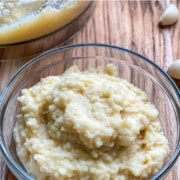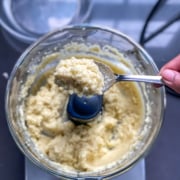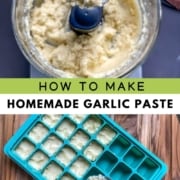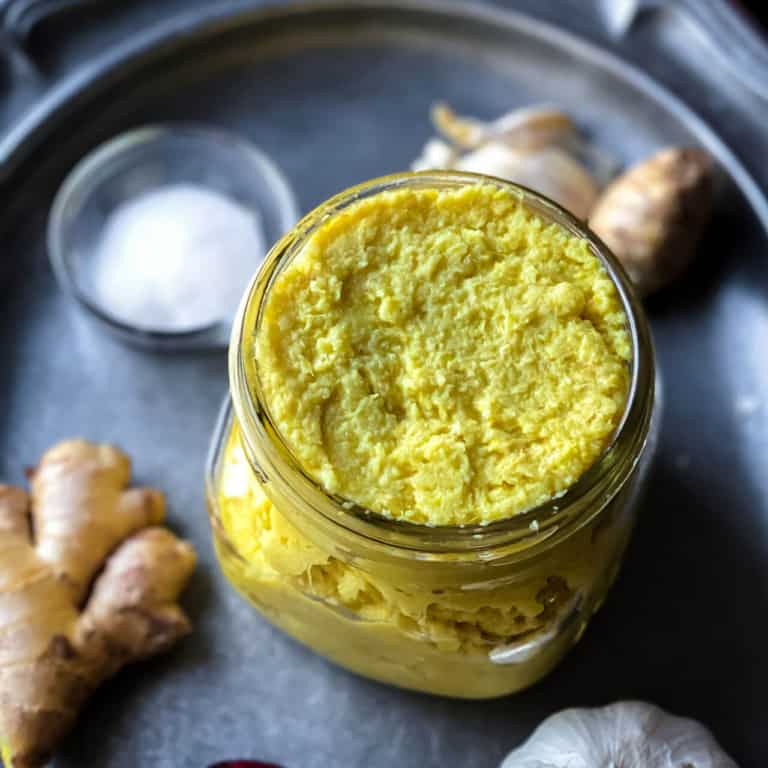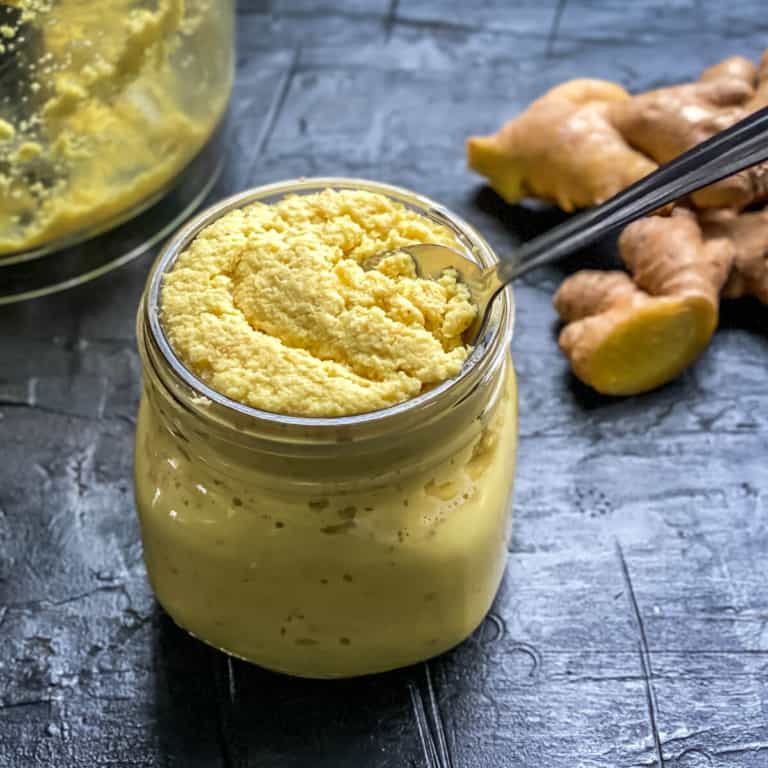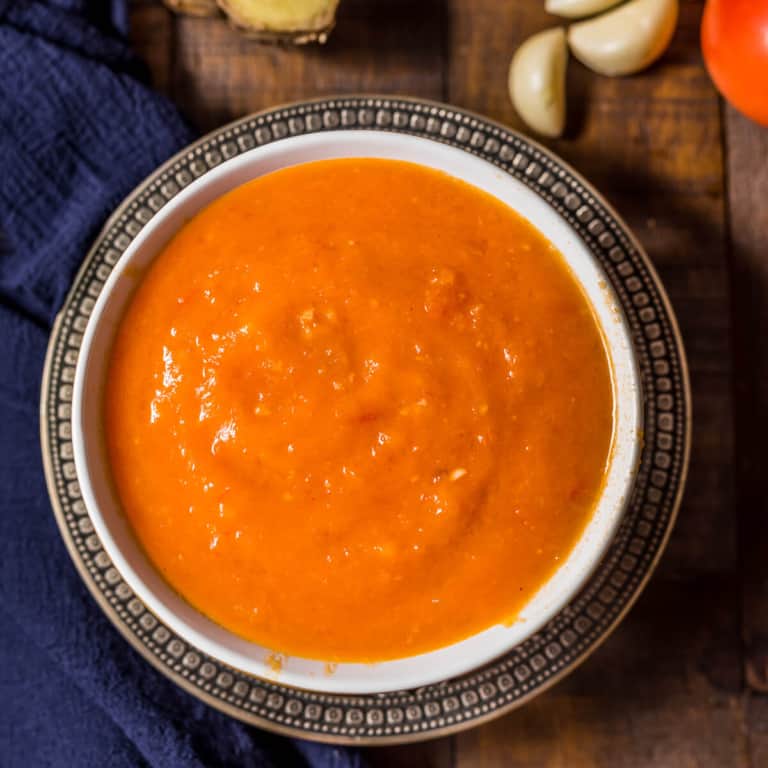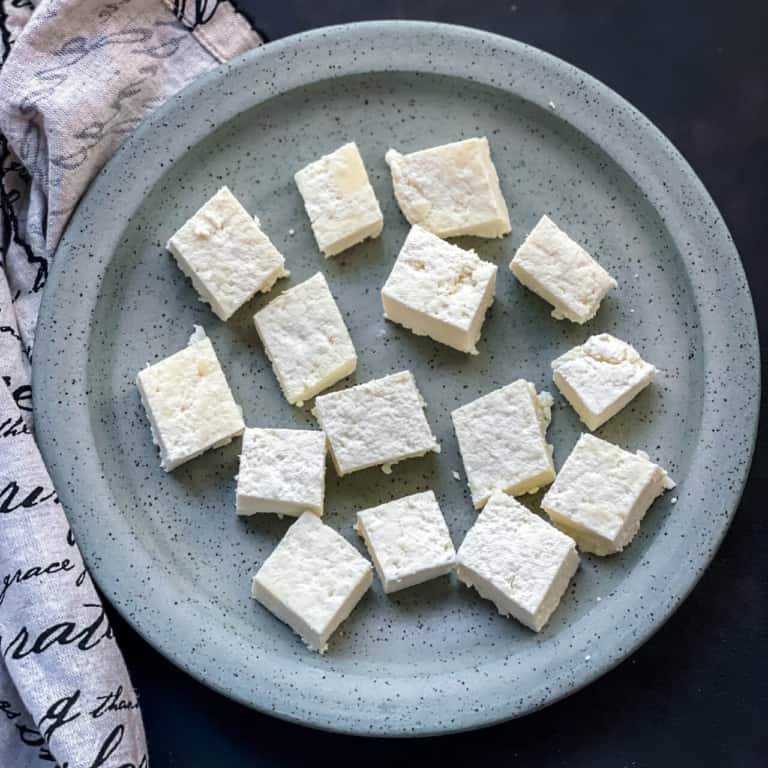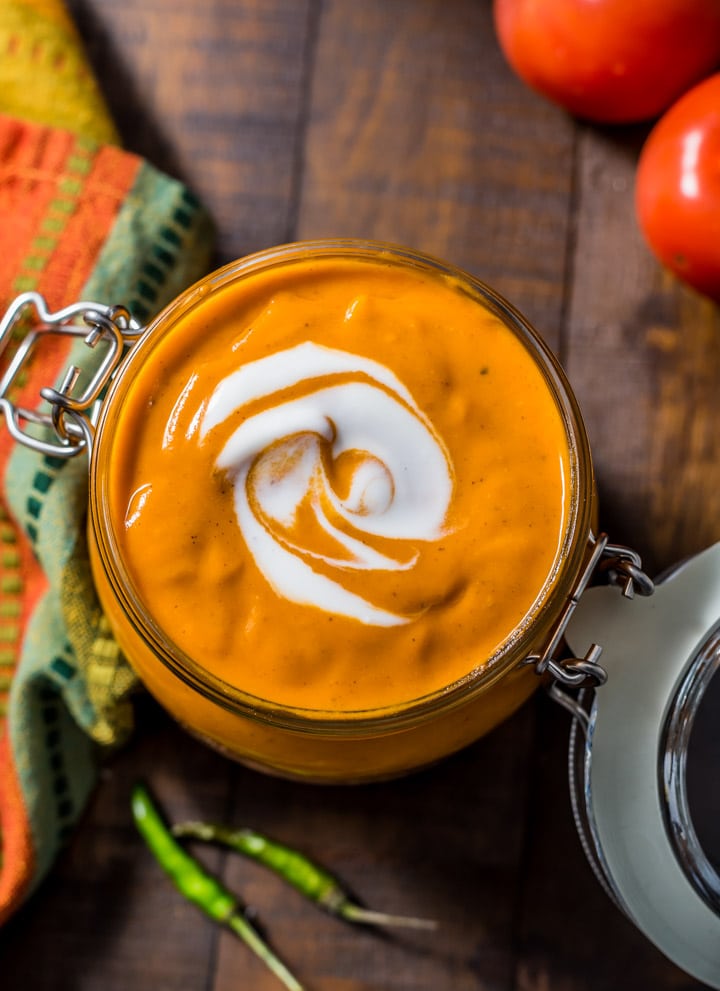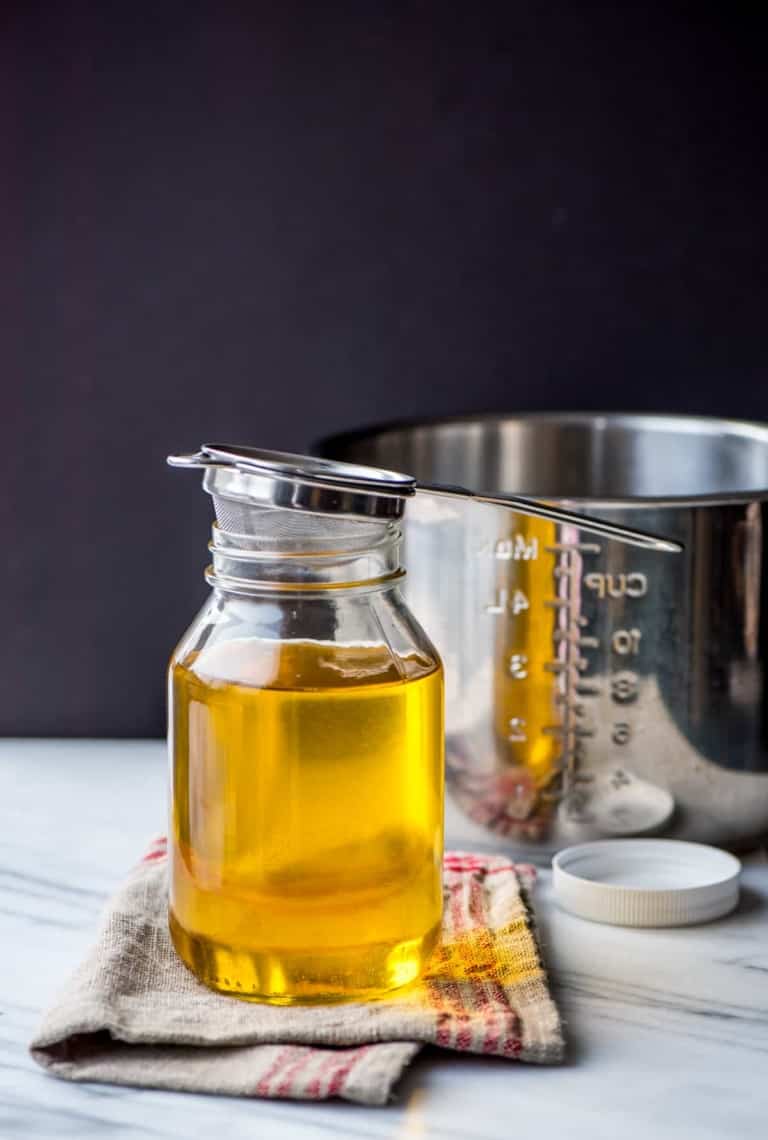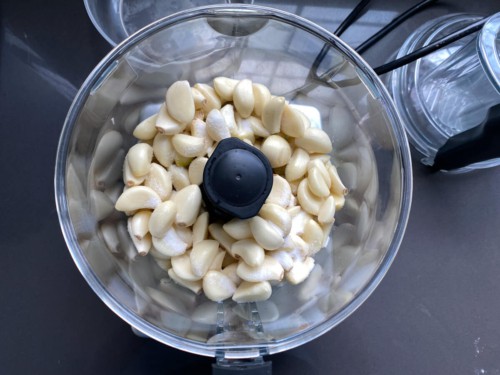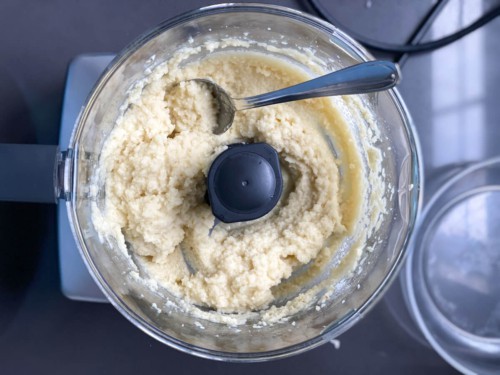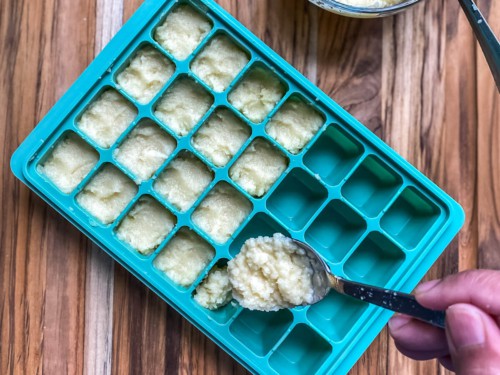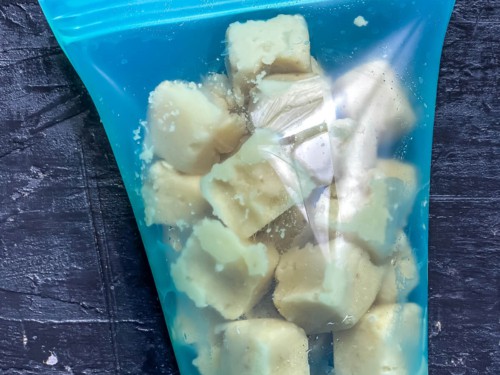How to make and store fresh garlic paste
Note: This post contains affiliate links. As an Amazon Associate I earn from qualifying purchases.
If you’re looking to make garlic paste to use in Indian recipes, look no further than this easy pureed garlic paste. Made with fresh garlic, it’s the perfect way to incorporate authentic garlic flavor into all of your favorite dishes.
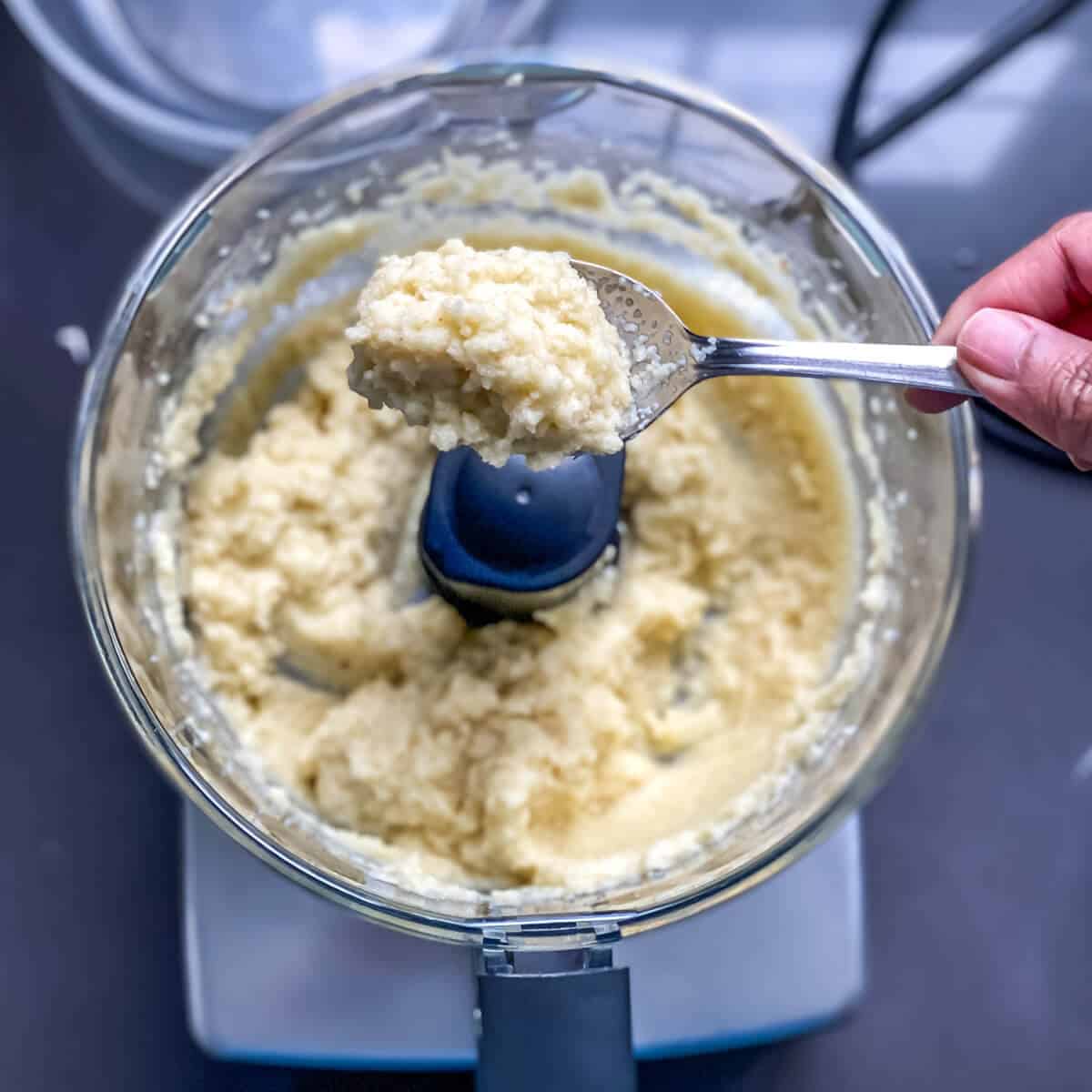
Most Indian recipes call for garlic, and that’s why having homemade garlic paste in your fridge or freezer is such a time-saver!
Making this paste in large batches ahead of time will save precious minutes in your weekly cooking routines and make preparing those delicious meals just a little bit easier.
This meal prep alternative to freshly minced garlic has all of the flavors of fresh, with all the convenience of storebought garlic paste, jarred, or dried garlic.
For more meal prep hacks such as this ginger garlic paste, and ginger paste, check out – Indian meal prep tips and tricks.
What is garlic paste?
Garlic paste is very common in Indian cooking since garlic is a crucial component of many dishes. It is made by blending fresh garlic with oil and salt and can be stored in the fridge or in the freezer for easy access during meal preparation.
Is minced garlic the same as garlic paste?
Minced garlic and garlic paste are not the same. Although the two are different, they can be used interchangeably if you need to.
Garlic paste is typically made at home by blending fresh garlic into a paste, while minced garlic is made by chopping garlic with a sharp knife over and over again until it is the desired size.
Minced garlic is available jarred in most grocery stores. Garlic paste, however, has a stronger flavor that more closely resembles fresh garlic compared to jarred minced garlic.
Substitution ratios
A bulb of garlic typically holds ten cloves. The substitution chart is for one large garlic clove.
- 1 large garlic clove = 1 teaspoon garlic paste
- 1 large garlic clove = 1 teaspoon chopped garlic
- 1 large garlic clove = 1/2 teaspoon minced garlic
- 1 large garlic clove = 1/8 teaspoon garlic powder
- 1 large garlic clove = 1/2 teaspoon garlic flakes
Note: Since most Indian recipes call for 3-4 garlic cloves (minced), it is helpful to know that 1 tablespoon of garlic paste = 3 garlic cloves.
Benefits of garlic
Garlic contains sulfur compounds that have been used for centuries to treat colds, flu, and various ailments. Studies have also shown it can reduce blood pressure and cholesterol levels.
Additionally, garlic has a lot of nutritional benefits for very few calories. It is high in both manganese and Vitamin B6 and has trace amounts of many minerals.
Read More: 11 Proven Health Benefits of Garlic
How to pick garlic
It is important to pick the best quality garlic you can find. This will ensure your paste is not bitter or too pungent, which can easily ruin a dish.
Look for garlic bulbs that are tightly packed without any cloves separating from the head. Check for signs of sprouting (small green shoots), mold, or bruising. These are all indicators that the bulb is not of high quality and shouldn’t be used to make this Indian garlic paste.
How to store garlic cloves
Once you have broken your head of garlic and separated the cloves, you have about 10 days before the cloves start to bruise and go bad. Keep them in a cool, dark place for the best results.
If you need to preserve your garlic cloves for longer than 10 days, store them in an air-tight container in the fridge. Better yet, preserve your garlic cloves by turning them into a garlic paste that can easily be stored in the fridge or freezer.
How long do garlic cloves last
Once separated from the main bulb, garlic cloves last about 10 days at room temperature. If stored in an air-tight container in the fridge, they may last as long as 12 days, but they will lose their pungency quickly once placed in the fridge.
Can you freeze fresh garlic?
It’s very easy to freeze fresh garlic. All you have to do is peel the cloves completely and place them in a freezer bag. Freeze for up to 3 months, and take them out to use in your favorite meals as needed.
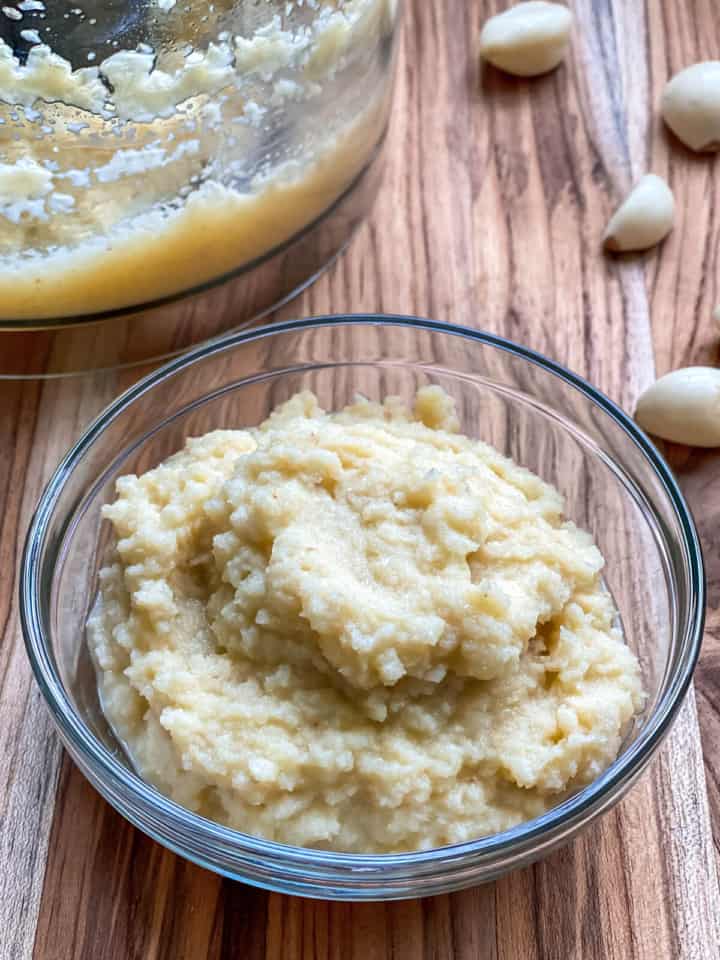
Why make homemade garlic paste?
- There is no debate that fresh garlic tastes better than jars of minced garlic or dried garlic. This garlic paste gives you the best of both worlds: convenience and the pure taste you only get with fresh garlic.
- Using store-bought prepared garlic can be expensive. You can save a lot of money by making it in batches and freezing it for use in your favorite dishes later on.
- When you make homemade garlic paste with fresh garlic, there are no preservatives, fillers, or added ingredients.
- This garlic puree will save you time. Since fresh garlic is a meal prep staple, preparing it in advance and freezing it will help you save extra steps during your nightly meal preparation.
Here’s what you need to make the recipe
Whether you’re a fan of Indian food, looking to spice up your favorite recipes, or just love the garlic flavor, this easy recipe is for you. Here’s what you need –
Ingredient notes/swaps
- Garlic – Buy peeled garlic to save time on peeling.
- Oil or water for a smoother puree – As for ingredients besides garlic cloves, consider a bit of oil – avocado oil, vegetable oil, or canola oil works great. It not only helps to create a smoother paste but it is also a natural preservative. Adding water while making the paste may cause water to spit when frying and it also reduces shelf life.
- Salt – Combining the pureed garlic with salt prolongs the storage time.
Be sure to check out the full recipe and ingredient list below.
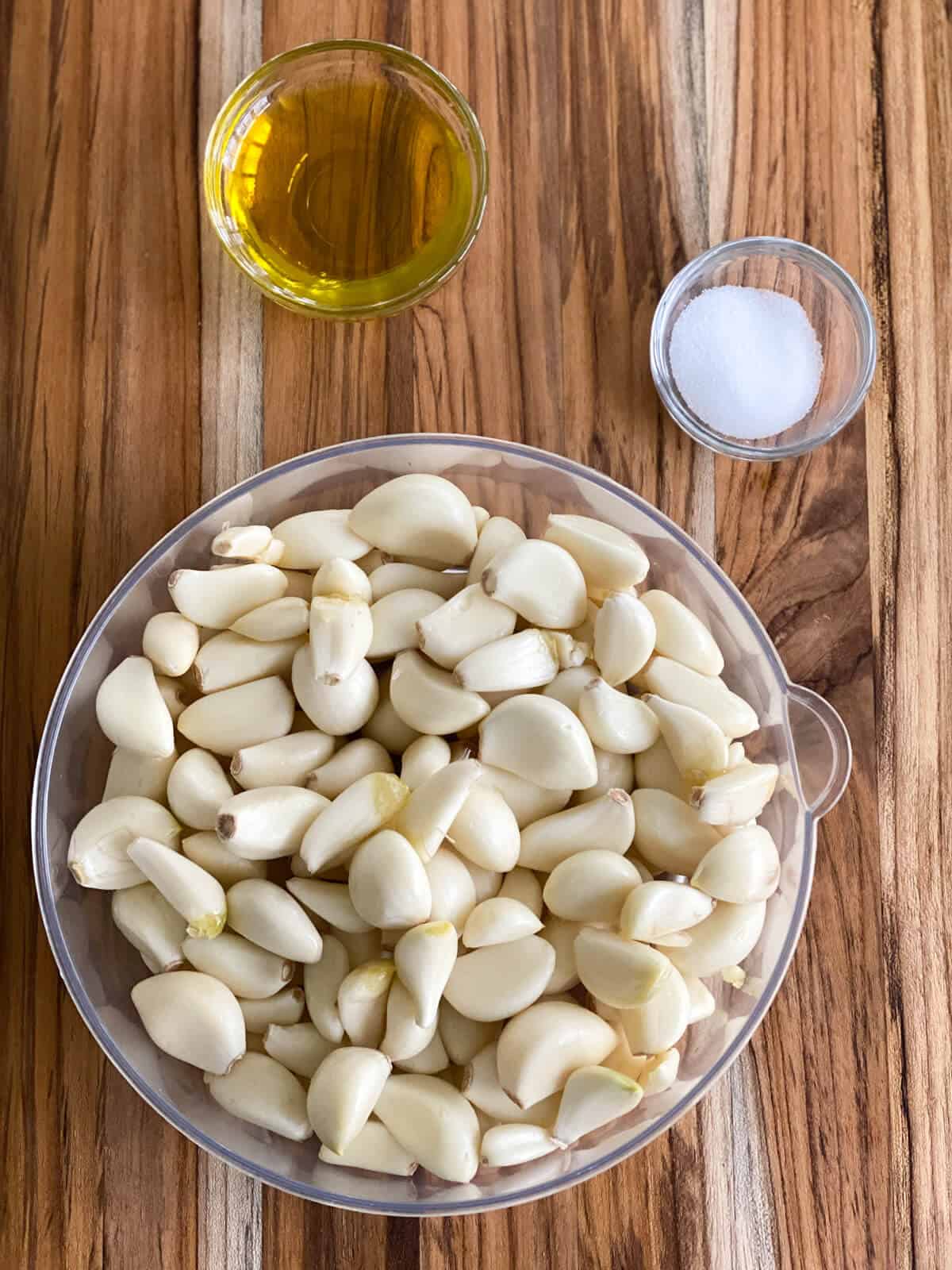
Tools needed
How to peel garlic quickly
Here’s how to peel garlic in a few simple steps
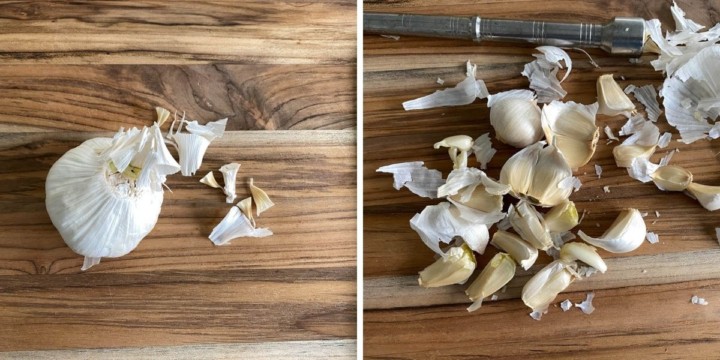
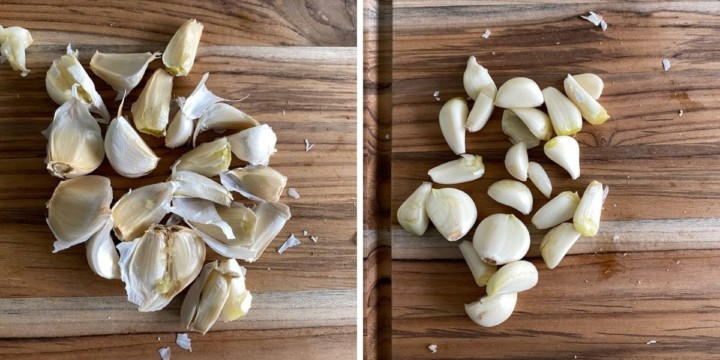
- Trim the edges of the garlic.
- Pound the garlic once with a pestle. This one blow should be enough to loosen up the garlic cloves.
- Separate the cloves.
- Peel the skin off the cloves. If you are having trouble peeling the cloves, the pestle can help. Gently pound the clove, and the skin should loosen.
For those on a busy schedule, pre-peeled garlic is a time-saver. You can find them in your nearest Indian grocery stores such as Patel Brothers.
Making garlic paste
Add oil, peeled garlic, and salt to your food processor or blender jar. Blend until you achieve a smooth paste. If it’s too thick, add a little more oil until you reach the desired consistency.
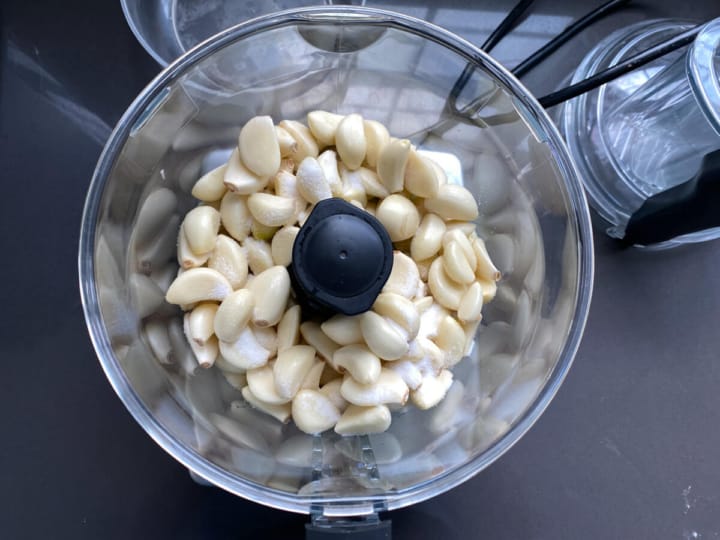
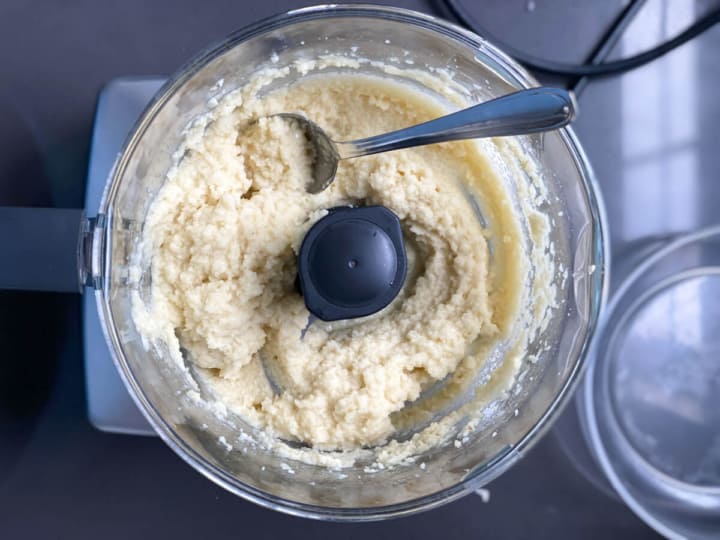
How to take the smell of garlic from your fingers
If your hand soap isn’t helping, the best way to remove the smell of garlic from your fingers and hands is to
- Make a paste with 1 part salt and 2 parts baking soda.
- Add enough water to make a paste and scrub it into your hands for 30 seconds to 1 minute.
- Rinse your hands clean of the paste, and then wash them thoroughly with soap and water.
Storage tips
Note: It is absolutely crucial to store your garlic properly, and ensure that you are using safe preserving methods. Garlic preserved in oil and stored at room temperature has been shown to contain botulism, which is an extremely dangerous toxin. For more information, read these guidelines published by the USDA.
Follow the steps below to preserve homemade garlic paste
- Store in the refrigerator in an air-tight glass container for about 7-10 days.
- To preserve for 3-4 months, transfer the garlic paste to an ice cube tray (preferably with a lid to avoid freezer burn), leaving some space for expansion.
- Once frozen (will take about 6-8 hours), transfer the frozen cubes to a freezer bag like Ziploc or a reusable storage bag and store it in the freezer for up to 6 months. This method is perfect for meal prep, ensuring you have fresh garlic paste on hand for everyday cooking.
I use this silicone ice-cube tray to freeze the paste. It has a capacity for about 2 teaspoons per crevice, but I fill around 1.5 teaspoons to allow the paste to expand.
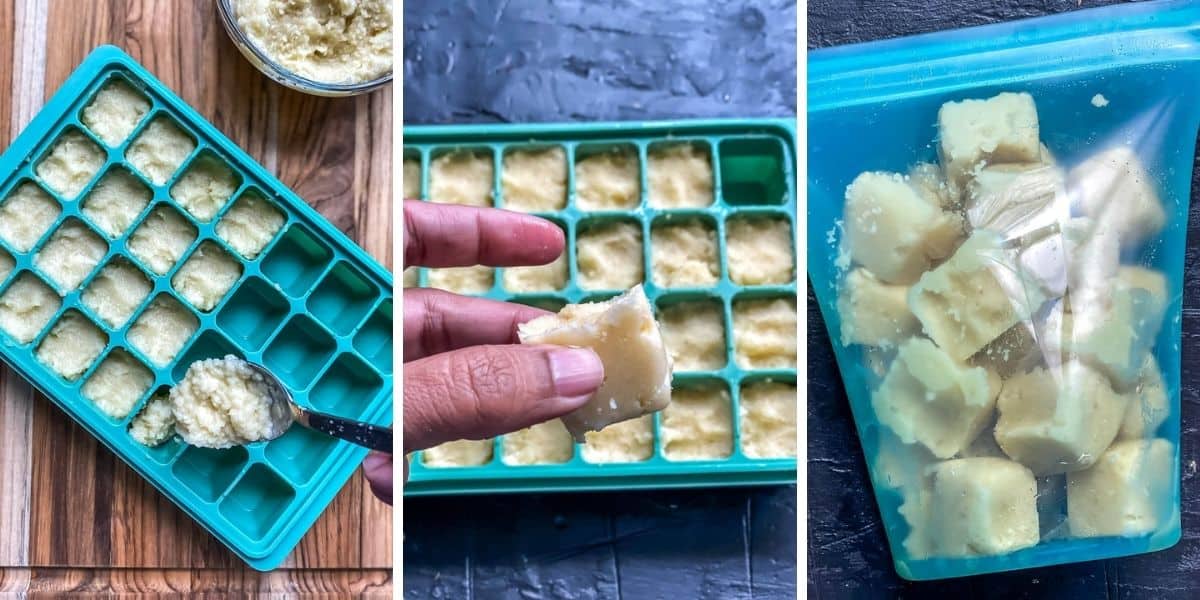
TIPS
Time-saving tips
- If you’re short on time, you can use store-bought peeled garlic. It can be found in large bags in the produce section.
- My preferred method to peel garlic quickly is to add 3-4 garlic cloves to the mortar and strike them once with the pestle. Just one blow should be enough to crush the garlic partially, and you should be able to peel the skin off easily.
Tips for preserving the shelf-life
- Always use a clean and dry spoon when scooping out refrigerated garlic paste.
- Do not thaw the frozen cubes. Remove the quantity needed and immediately put the remaining cubes back in the freezer.
- Instead of water, grind the paste with oil. The oil acts as a preservative and increases its shelf life. Adding oil also prevents your garlic paste from turning green.
Note: The sulfur compounds in garlic get activated when crushed or minced. If it is not immediately used, it reacts with air and turns green. However, it is still edible.
How to use garlic paste
Garlic paste is used to substitute freshly minced/crushed or chopped garlic. Depending on how you have stored the paste (refrigerator or freezer), there are two ways to use the paste –
Refrigerated paste – Replace one clove of garlic with one teaspoon of paste.
Frozen cubes – I use this silicone ice-cube tray to freeze the paste. It has a capacity for about two teaspoons per mold, but I recommend you fill around 1.5 teaspoons to allow the paste to expand.
Two of those frozen cubes make one tablespoon. So use two cubes for curries and one cube for dals. No need to thaw before using.
Recipes that use garlic paste
The use of garlic paste in Indian cooking is very common, and it’s a great shortcut that is widely used to prepare curries and many other dishes. Here are a few of my favorite recipes:
- Instant Pot chicken tikka masala
- Instant Pot moong bean curry
- Chettinad chicken curry
- Black-eyed peas curry
- Punjabi rajma masala
Garlic paste is not just for Indian recipes. Its robust garlic flavor enhances a variety of dishes, from marinades to sauces. It’s also a key component in garlic ginger paste, a staple in Indian cooking.
Garlic paste substitute
If you do not have fresh garlic paste on hand and are in a pinch, you can easily substitute fresh or minced garlic in its place. If you need to substitute, each teaspoon of garlic paste can be replaced with 1 large clove of garlic or 1 teaspoon of minced garlic.

FAQs
Peeled garlic can be purchased in the produce section of most large and chain grocery stores. It often comes in a plastic container and is in the refrigerated or cold storage section.
Garlic paste is used to replace finely minced garlic in your favorite recipes. It is a great meal prep alternative to chopping garlic by hand.
While not the most efficient and fast way, you can always use a mortar/pestle to make garlic paste in small batches.
Garlic paste can easily be frozen. Just press it into a silicone ice cube tray and freeze it flat. Once the cubes of garlic paste have been frozen, pop them out of the tray and add them to a freezer bag. Store in the freezer for up to 6 months.
When crushed or minced, garlic activates its sulfur compounds. If not immediately used, it reacts with air and turns green. However, it is still edible. To avoid this, use oil while making the paste.
In Indian cooking, garlic paste or freshly minced garlic is usually added once the onions have softened. Make sure to saute the garlic in oil for about 2-3 minutes to remove the raw taste.
Garlic should be stored in the refrigerator for 7-10 days to preserve it. It can also be stored in the freezer for 6 months in an airtight container or freezer-proof plastic/silicone bags.
A bit of oil helps create a smoother paste and preserves it longer, but it’s not essential.
Making homemade garlic paste is one of the best ways to add depth and strong flavors to your cooking. Whether you’re prepping for busy days or love the convenience of a homemade paste, this easy recipe is a game-changer.
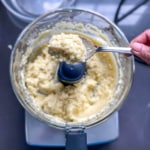
How to make Homemade Garlic Paste
Equipment
Ingredients
- 1 lb (350 gms) garlic cloves peeled
- 3 tbsp oil (avocado or any vegetable oil) or water
- 1 teaspoon salt
Instructions
- Add oil, peeled garlic, and salt to a blender or food processor.

- Grind to a fine paste. Make it in batches, if needed. Note – If you are having trouble blending it, feel free to add a little more oil until you reach the desired smooth paste consistency.

Storage Instructions
- Store in the refrigerator in an air-tight glass container for about 7-10 days.
- To freeze, transfer the garlic paste to an ice-cube tray. Don't fill it to the brim and leave space for expansion.

- Once frozen, pop the cubes out and transfer it to a Ziploc or a silicone bag and store it in the freezer for up to 6 months.

Notes
Disclaimer: Approximate nutritional information is provided as a courtesy and can vary depending on the exact ingredients/brands used. If you have health issues, please work with a registered dietician or nutritionist.
Nutrition
This post was originally written on May 04, 2022, and was republished with additional information on Dec 15, 2023.

